The NVIDIA SHIELD Tablet Review
by Joshua Ho on July 29, 2014 9:00 AM ESTCPU Performance
As the first Tegra K1 device the Shield tablet is especially interesting. For those unfamiliar with the Tegra K1, NVIDIA integrated four ARM Cortex A15r3 variant cores along with a fifth companion A15r3. While on the surface it seems the CPU configuration it’s largely similar to the Tegra 4, there are some substantial differences. On the process tech side, the move to 28HPm adds SiGe source and drains for PMOS transistors, which dramatically improves drive current and makes it possible to bump clocks up to 2.2GHz for the CPU cores. The new revision of Cortex A15 also means that there’s better power management which should help with power efficiency (and thus battery life). The result is that peak CPU voltage drops from 1.4 volts in Tegra 4 to 1.2V in Tegra K1, and peak clocks are higher in the K1 as well.
Of course, the truly interesting aspect are benchmarks, as those will really show the differences between Tegra 4 and Tegra K1. It will also help to establish how Tegra K1 fares against the competition.
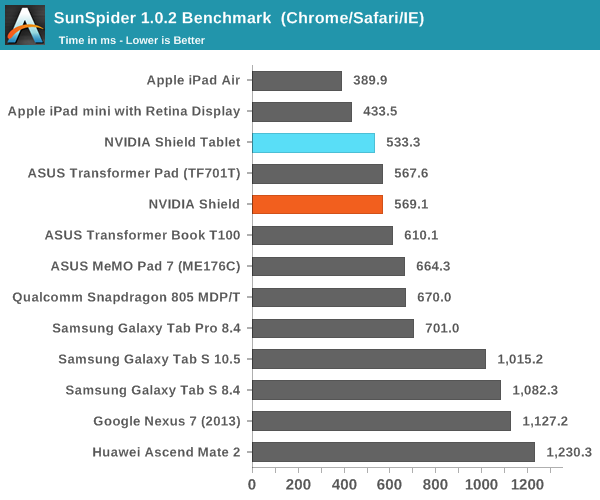
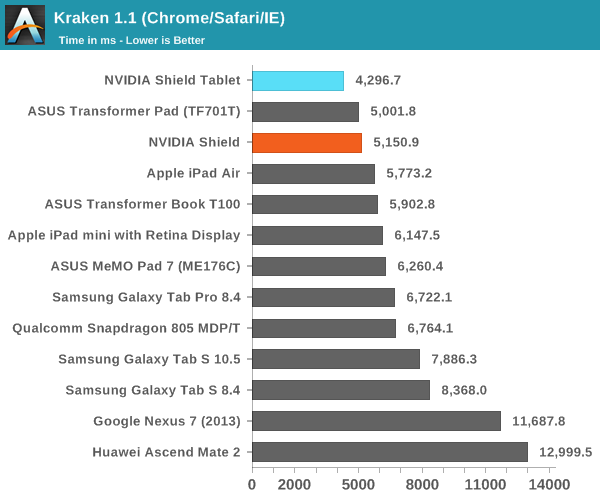
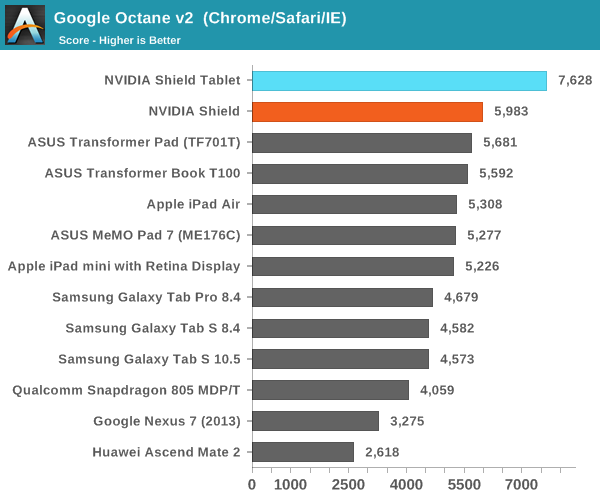
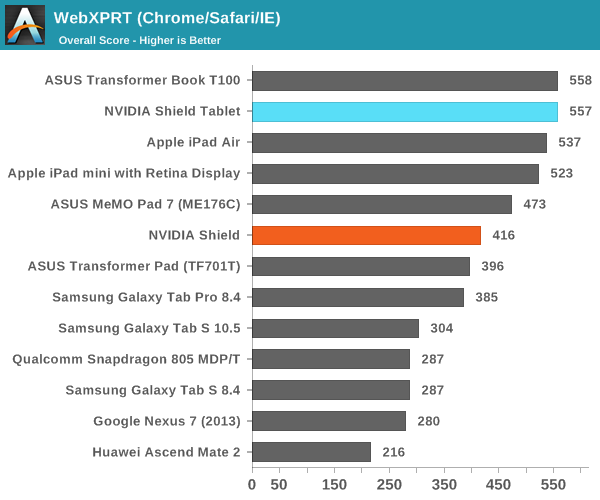



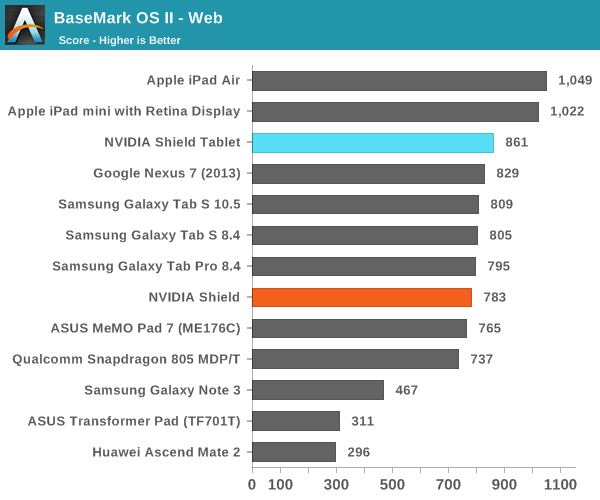
Despite the largely similar clock speeds compared to the Snapdragon 800 we see that the Tegra K1 is generally a step above in performance. Outside of Apple’s A7 SoC and x86 SoCs, NVIDIA is generally solidly ahead of the competition. Of course, as a gaming tablet there’s a strong need for GPU performance, so we'll look at that next.










174 Comments
View All Comments
surbringer - Tuesday, July 29, 2014 - link
Have you tried to run PPSSPP on it ?kyuu - Wednesday, July 30, 2014 - link
I can run PPSSPP on my Venue 8 Pro, and the K1 in this tablet is certainly much more powerful GPU-wise than Bay Trail. Shouldn't be an issue.Johnny_k - Tuesday, July 29, 2014 - link
Correction: you now can use Gamestream outside your house, (even over lte on the lte tablet version)Remotely access your PC to play your games away from your home.
http://shield.nvidia.com/play-pc-games/
Note that it is in beta
RoninX - Tuesday, July 29, 2014 - link
I'd love to see Anandtech do a real-world test on how well Gamestream works with the Shield outside the home.chizow - Tuesday, July 29, 2014 - link
Yes, unfortunate AT did not cover this at all, as I also recently found out GameStream remote was in beta. This is really the killer-app for Shield until Android gaming takes off (if it ever does). I would consider buying one of these if Remote GameStream worked decently well, but I'll probably hold off on either a Shield Portable 2 (with TK1) or a good GeForce bundle with Maxwell.ams23 - Tuesday, July 29, 2014 - link
I am impressed that Shield tablet has even higher graphics performance in GFXBench 3.0 T-Rex HD Offscreen than the actively cooled Surface Pro 2 and Surface Pro 3: http://images.anandtech.com/graphs/graph8296/65868...Note that thermal throttling behavior on Shield tablet is extremely good. There was virtually no throttling until after 115 runs (!) with the GFXBench 3.0 T-Rex HD benchmark: http://images.anandtech.com/doci/8296/TRexRunDownG...
I suspect that the 3dmark Unlimited scores are CPU-limited to some extent. Shield tablet already achieves > 200 fps on game test 1 and > 100 fps on game test 2, so this particular test is not very stressful (relatively speaking) for this GPU.
The web browsing battery life is pretty good all things considered, especially compared to iPad Mini Retina and iPad Air (which have 23% and 64% more battery capacity, respectively than Shield tablet). The Shield tablet has CPU and browser performance that is at least 2x faster than Nexus 7 2013 variant, so the web browsing efficiency is actually quite good in comparison.
UpSpin - Wednesday, July 30, 2014 - link
agreed, those results are impressive and a huge step forward, for both NVidia and all the others.Considering that the Shield uses the ancient quad core 32-bit Cortex A15 variant of the Tegra K1 and NVidia also has a custom dual core 64-bit variant of the K1 I think we can expect a further CPU boost once this 64-bit SoC reaches customers.
jospoortvliet - Thursday, July 31, 2014 - link
The A15r3 is not exactly ancient but I agree that Denver is something to look forward to 😎Anonymous Blowhard - Tuesday, July 29, 2014 - link
>Games like Saints Row 3 played as if running on a consoleSo, 720p30, Low Detail? ;)
Death666Angel - Tuesday, July 29, 2014 - link
Zing! :D